Birds are among the most fascinating creatures on Earth, and some of them are truly massive in size. The largest flying birds in the world are known for their impressive wingspans, heavy weights, and their ability to soar effortlessly over great distances. They come from different regions and include scavengers like the Andean condor, graceful oceanic travelers like the wandering albatross, and powerful fliers like the great white pelican. Each species has unique adaptations that allow them to thrive in their environments, whether high in the mountains or over vast oceans.
Tristan Albatross (Diomedea dabbenena)
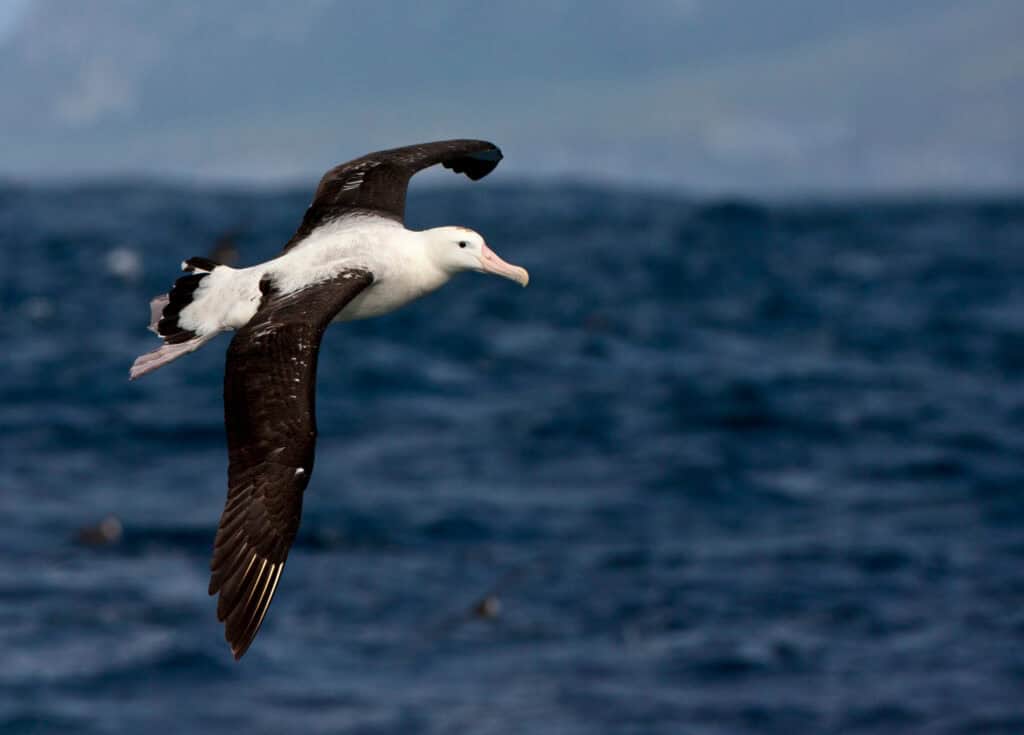
The Tristan albatross, weighing between 6.8 to 7.3 kilograms (15 to 16 pounds), is a member of the albatross family, known for its impressive wingspan of 3.5 meters (11 feet). Found primarily in the South Atlantic, around islands such as Tristan da Cunha, it is one of the largest seabirds in the world. Its distinctive long wings allow it to glide effortlessly over vast oceanic expanses, using dynamic soaring techniques to travel thousands of kilometers in search of food, which consists mainly of fish and squid. Despite its graceful flight, it faces significant threats, particularly from introduced species on its breeding islands that prey on its chicks. This species is critically endangered, with conservation efforts focusing on protecting its limited breeding sites. It shares many traits with the closely related wandering albatross, including a remarkable endurance that allows it to stay in flight for days without landing.
Northern Royal Albatross (Diomedea sanfordi)
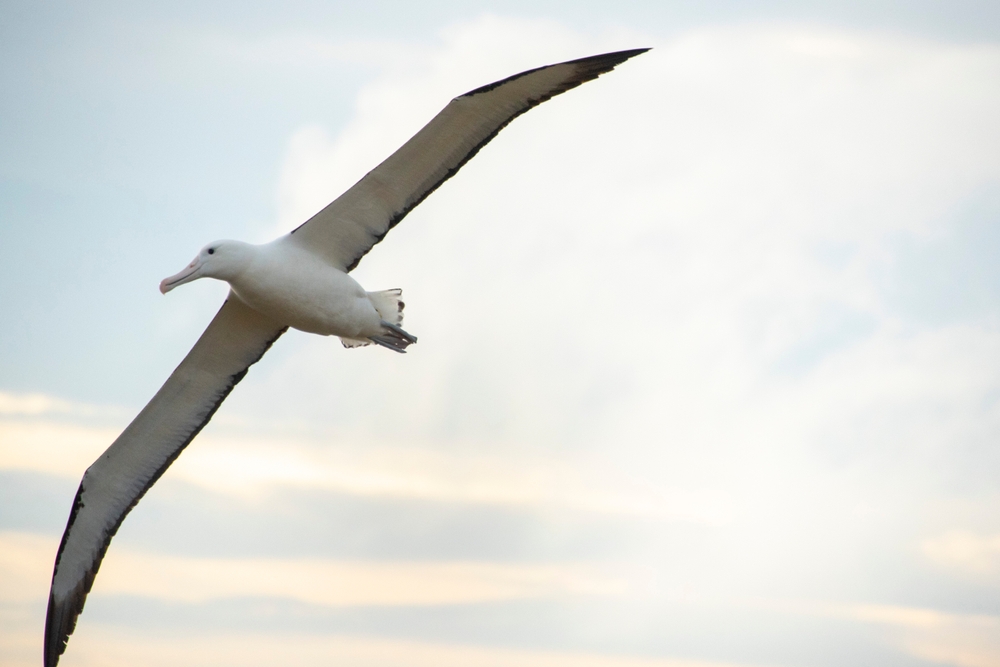
The Northern royal albatross weighs up to 8.2 kilograms (18 pounds) and has a wingspan of 3.2 meters (10.5 feet). They are found in sub-Antarctic waters, particularly around New Zealand’s Chatham Islands. Known for their long-distance flying abilities, they can soar for thousands of miles without flapping their wings. Their striking white plumage with dark wingtips helps them blend into the vast oceans they traverse. They primarily feed on squid and fish, which they catch near the ocean surface. Although they are majestic fliers, they face threats from longline fishing and habitat disruption, leading to a conservation status of endangered. Ongoing efforts are being made to protect their breeding grounds and food sources.
Wandering Albatross (Diomedea exulans)
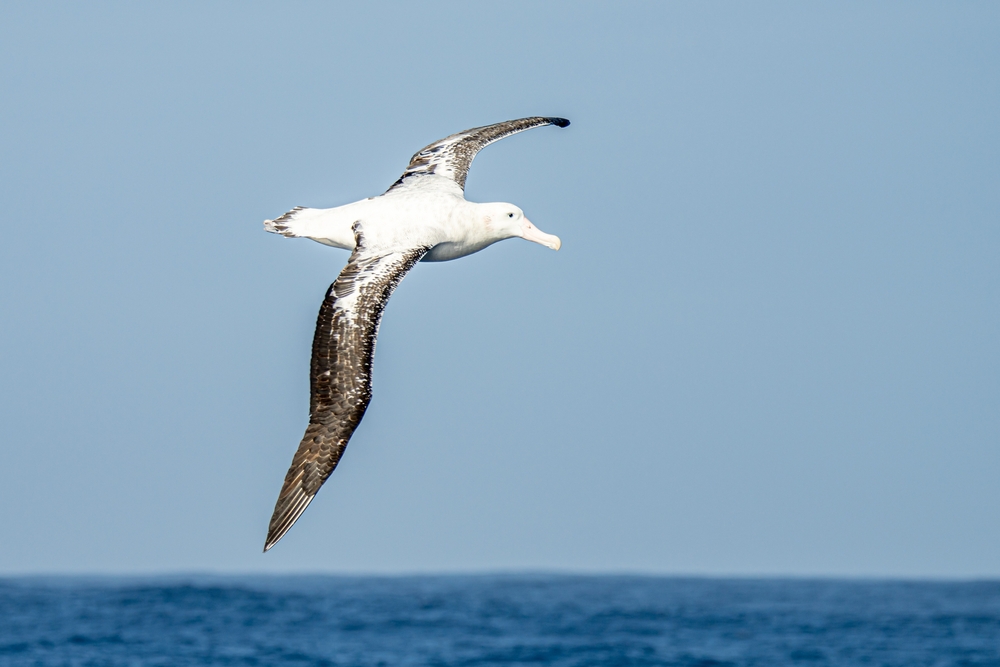
The wandering albatross, one of the lightest birds on this list, weighs between 6 to 12 kilograms (13 to 26 pounds). It is known for having the largest wingspan of any living bird, up to 3.7 meters (12 feet), allowing it to cover vast distances over the Southern Ocean. They spend most of their life gliding over the sea, using dynamic soaring techniques to minimize energy expenditure. Their diet mainly consists of squid and fish, which they capture near the surface of the water. They return to land only to breed, where they nest on remote islands. They are vulnerable due to threats from longline fishing, which can reduce their food sources and affect their breeding success.
Himalayan Griffon Vulture (Gyps himalayensis)
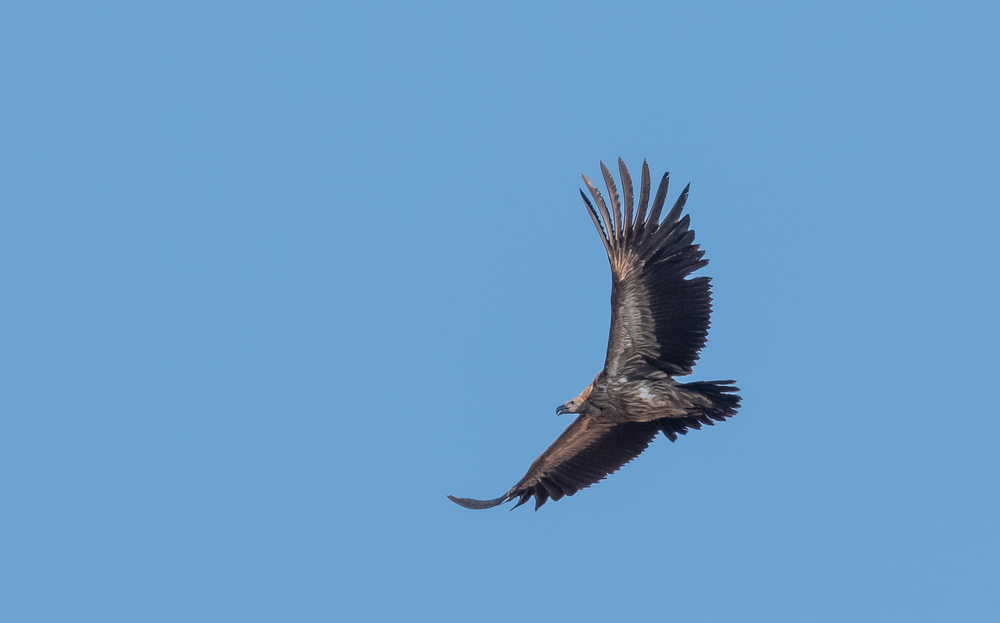
Weighing between 8 to 12 kilograms (17 to 26 pounds), the Himalayan griffon vulture is one of the largest vultures in the world. With a wingspan of up to 3.1 meters (10 feet), this scavenger is often found soaring over the high-altitude regions of the Himalayas and Tibetan Plateau. Their pale plumage, featherless heads, and large size make them well-suited for their scavenging role, as they can locate and feed on carrion over large areas. It plays an essential role in its ecosystem by helping to dispose of animal remains. Despite its vital function, the species is under threat from habitat loss and poisoning, particularly from chemicals used in agriculture.
Marabou Stork (Leptoptilos crumenifer)

The Marabou stork, often weighing between 9 to 12 kilograms (20 to 26 pounds), has a wingspan of 3.2 meters (10.5 feet) and is easily recognized by its bald head, long legs, and hunched posture. Found throughout sub-Saharan Africa, these scavenging birds often feed on carrion and are commonly seen around landfills and wetlands. Their bald heads are an adaptation that helps keep them clean when feeding on carcasses. While they might not be the most graceful birds on the ground, they are efficient fliers, using their large wings to soar effortlessly in search of food. Known as the “undertaker bird” due to their cloak-like plumage and scavenging habits, they play an important role in their ecosystems by cleaning up waste and carrion. They are also known to be social, often flying and nesting in colonies.
Trumpeter Swan (Cygnus buccinator)
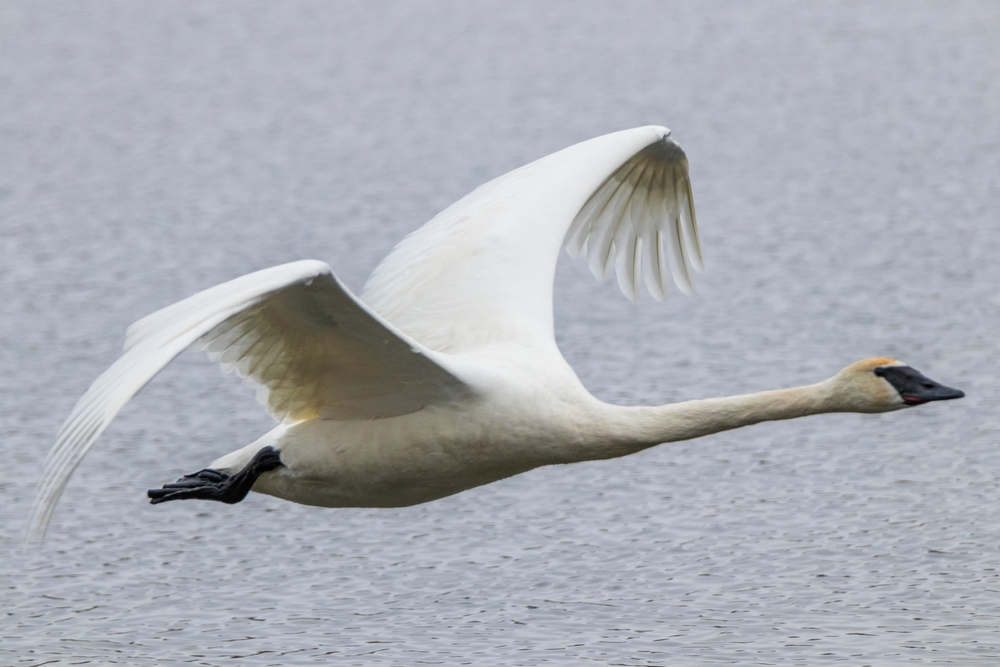
The trumpeter swan, the largest species of waterfowl in North America, weighs between 7 to 13 kilograms (15 to 28 pounds), with a wingspan of up to 3.1 meters (10 feet). Known for its striking white plumage and long neck, this elegant bird gets its name from the trumpet-like sound it makes during courtship and territorial displays. They are found in the northern regions of North America, where they inhabit large bodies of water such as lakes, ponds, and rivers. They are powerful fliers and swimmers, and their large size allows them to maintain body heat in cold climates. These swans form lifelong pairs and are highly protective of their young, sometimes showing aggression toward intruders.
Eurasian Black Vulture (Aegypius monachus)
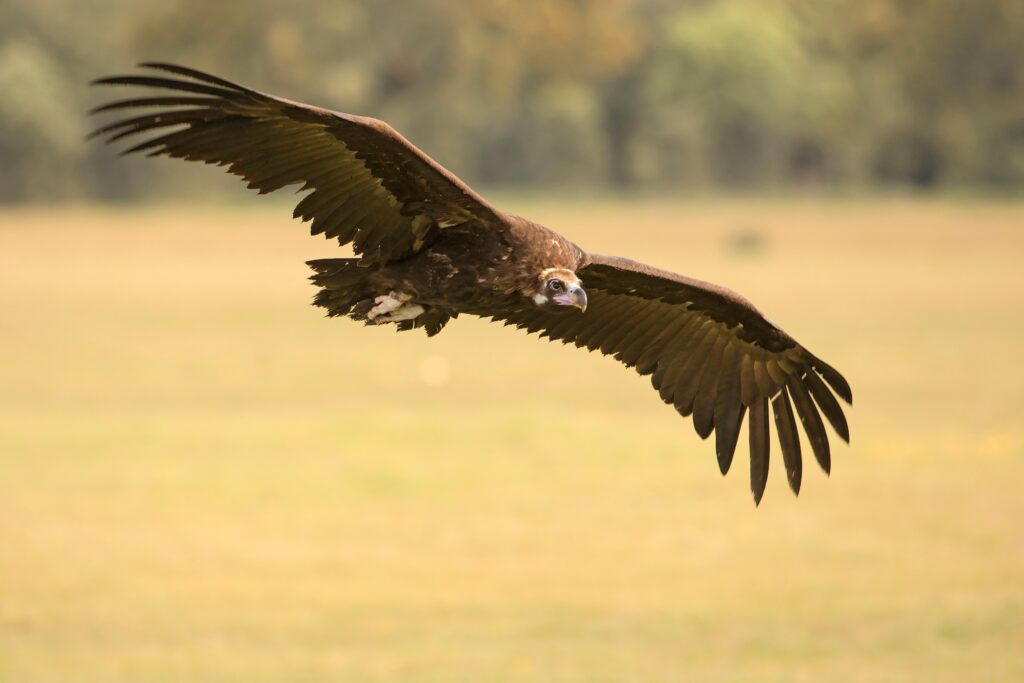
Weighing around 9 to 14 kilograms (20 to 31 pounds), the Eurasian black vulture is one of the largest and heaviest birds of prey. With a wingspan of up to 3 meters (10 feet), these birds are powerful scavengers found across Europe, Asia, and the Middle East. Their dark plumage, featherless heads, and large hooked beaks make them well-suited for feeding on carrion. Unlike many vultures, they are solitary and often seen flying alone in search of food. Despite their size, they have been observed covering vast distances in a day, relying on their excellent eyesight to locate dead animals.
Great White Pelican (Pelecanus onocrotalus)
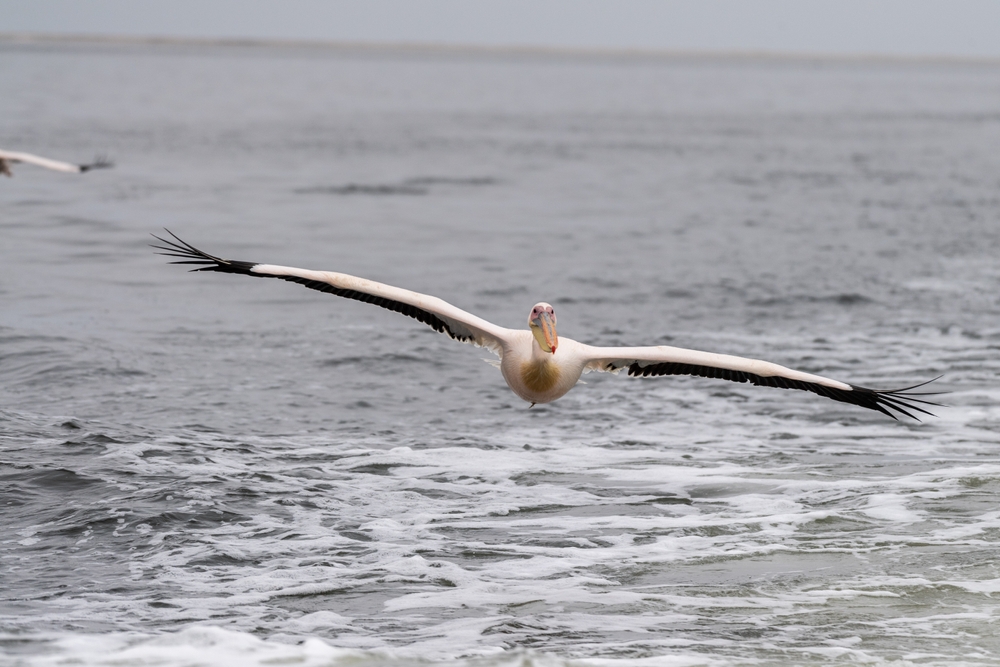
The great white pelican is an impressive bird with a wingspan of 3.6 meters (12 feet) and a weight of 10 to 15 kilograms (22 to 33 pounds). Found in Africa, southeastern Europe, and parts of Asia, these birds inhabit shallow swamps and lakes. They are expert fishers, using their large, expandable throat pouches to scoop up fish from the water. They are social birds, often seen flying in V-formation during migrations or hunting cooperatively in groups. Despite their large size, they are strong swimmers and fliers, capable of traveling long distances in search of food.
Dalmatian Pelican (Pelecanus crispus)

The Dalmatian pelican, the largest pelican species, weighs between 11 to 15 kilograms (24 to 33 pounds) and has a wingspan of 3.5 meters (11.5 feet). They are found across southeastern Europe, Russia, and parts of Asia, typically inhabiting lakes, rivers, and estuaries. Their silvery-white plumage and distinctive large beaks make them easy to recognize. They are social creatures, often seen flying in flocks or swimming together while hunting fish, their primary food source. Despite their size, they are graceful in flight, able to soar effortlessly over long distances.
Andean Condor (Vultur gryphus)
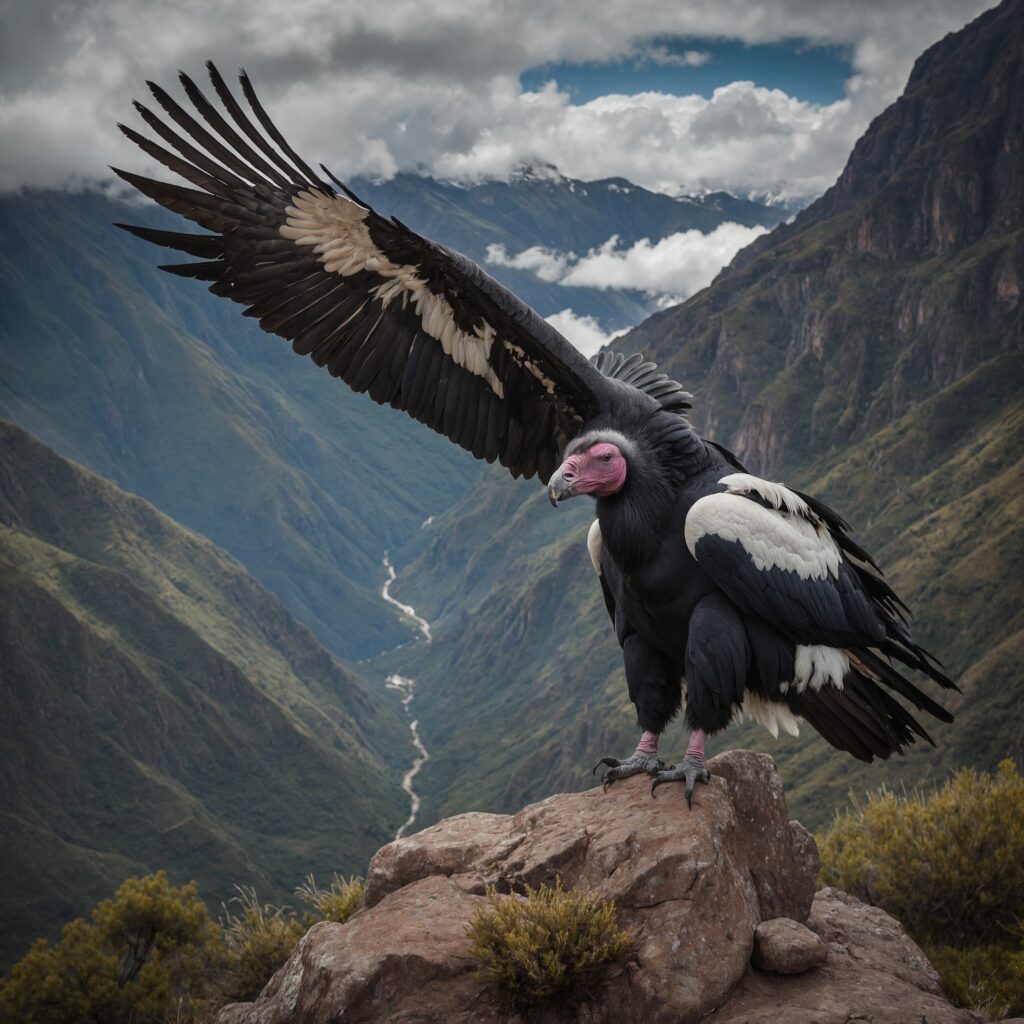
At the top of the weight scale is the Andean condor, weighing between 11 to 15 kilograms (24 to 33 pounds). The Andean condor, weighing between 11 to 15 kilograms (24 to 33 pounds), is the heaviest bird of prey on this list. Its wingspan reaches 3.3 meters (10.8 feet), allowing it to soar effortlessly over the Andes Mountains and Pacific coasts of South America. These majestic birds are primarily scavengers, feeding on large carcasses, such as deer or livestock, helping to maintain a healthy ecosystem by preventing the spread of disease. They are known for their endurance, gliding for hours without flapping their wings by using thermal currents in the high-altitude mountain ranges. Their distinctive black plumage, white collar, and large beak make them easily recognizable. Unfortunately, the species is near-threatened due to habitat loss, poisoning, and hunting.
This article originally appeared on Rarest.org.
More from Rarest.org
15 Rare Japanese Cars That Became Hidden Gems

Japan’s automotive history is filled with iconic models, but some cars remain lesser-known treasures that deserve more recognition. These rare vehicles, often produced in limited numbers, showcase unique designs, advanced technology, and exceptional performance for their time. Read More.
15 Forgotten Historical Artifacts Rediscovered in Modern Times

Throughout history, remarkable artifacts have been lost to time, only to resurface and change our understanding of ancient civilizations. These rediscovered treasures provide valuable insights into the cultures, technologies, and daily lives of those who came before us. Read More.
15 Remarkable Arctic Animals Adapted to Extreme Cold
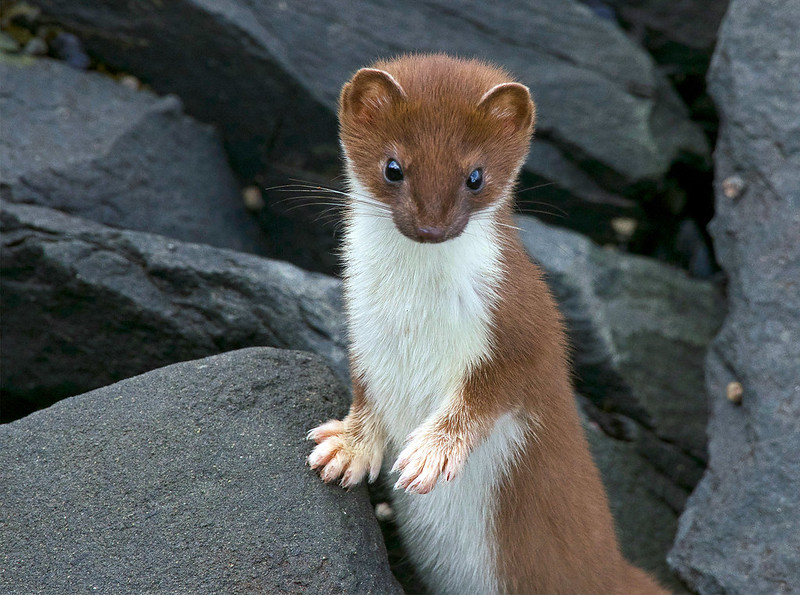
The Arctic is home to some of the most resilient animals on the planet, each uniquely adapted to survive in its extreme cold. From thick layers of blubber to camouflage coats that change with the seasons, these creatures have evolved remarkable ways to thrive in this frozen environment. Read More.
